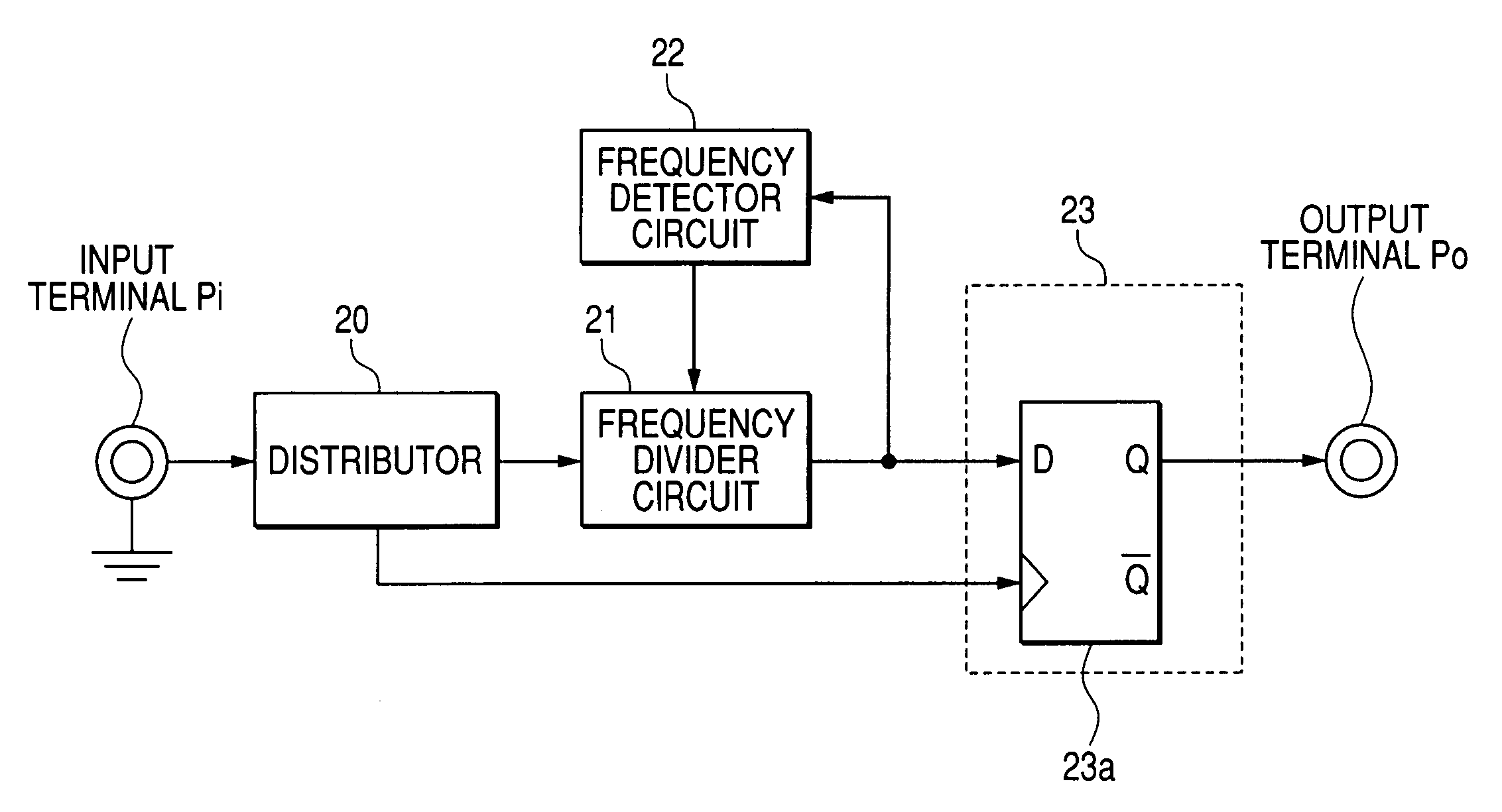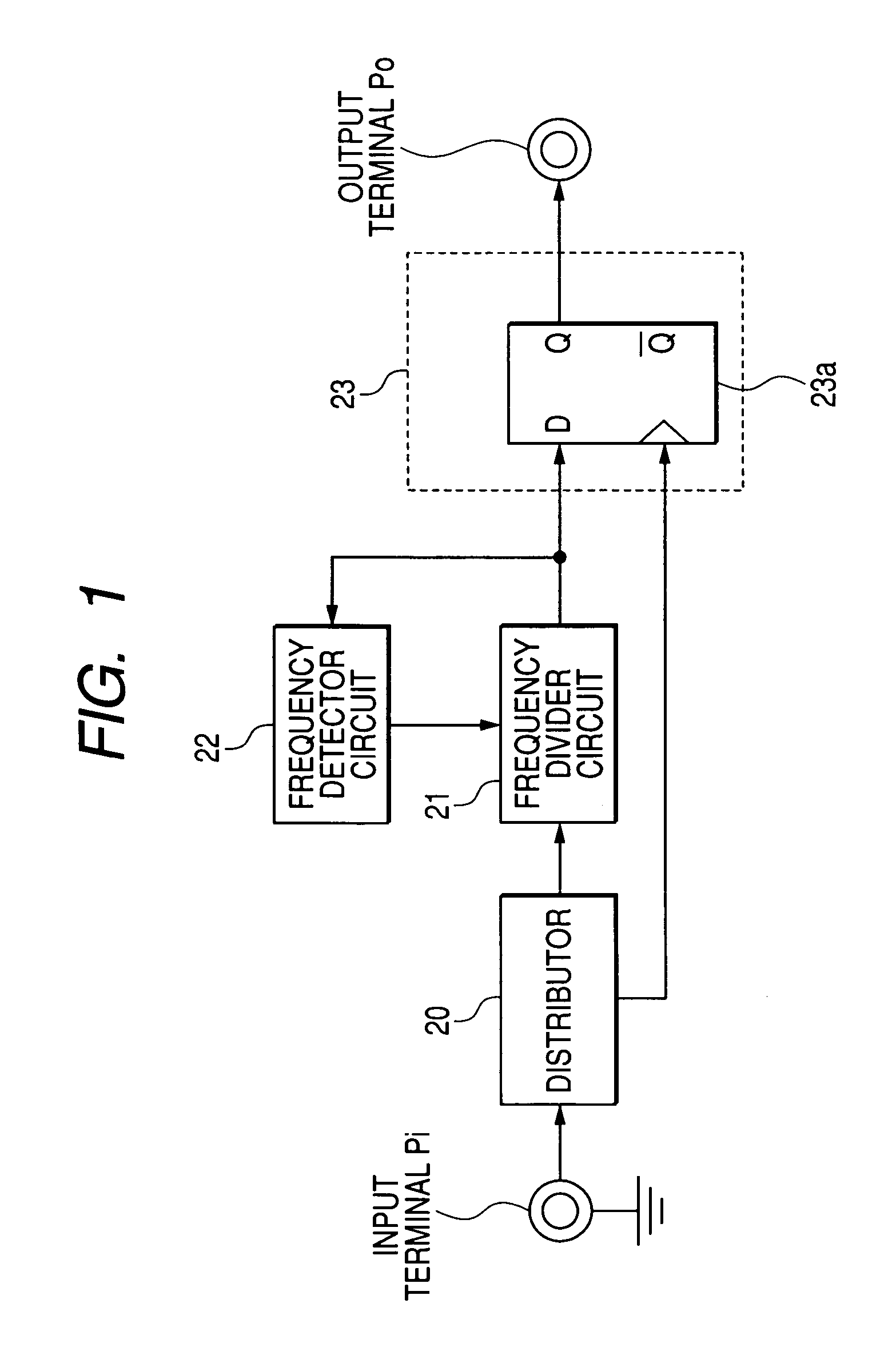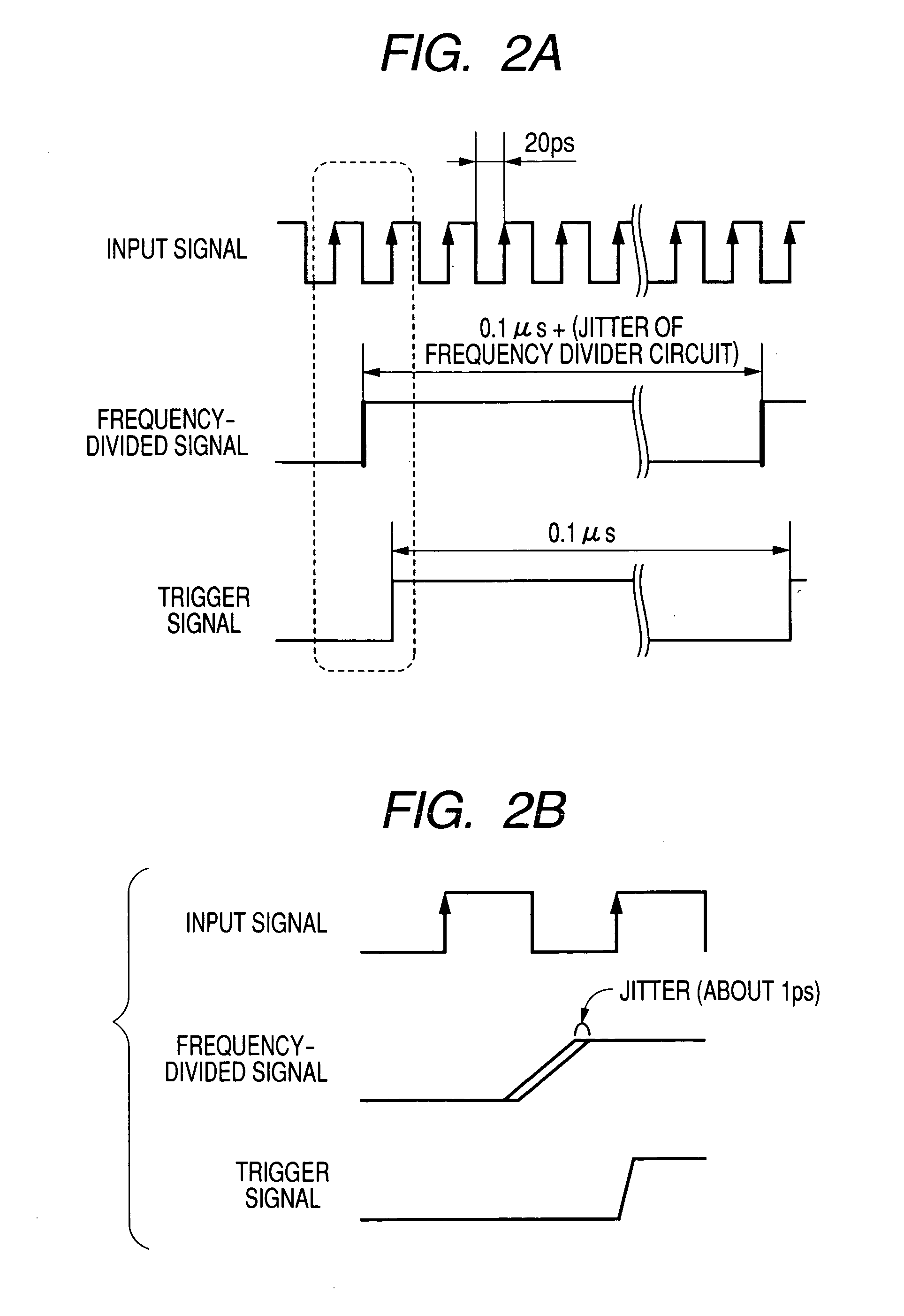Trigger signal generator
- Summary
- Abstract
- Description
- Claims
- Application Information
AI Technical Summary
Benefits of technology
Problems solved by technology
Method used
Image
Examples
first embodiment
[0051]FIG. 1 is a configurative view showing a first embodiment of the present invention. Here, the same reference symbols are affixed to the same sections as those in FIG. 7 and their explanation will be omitted herein. In FIG. 1, a distributor 20 receives the input signal at its input terminal Pi, and branches the input signal into two parts and outputs them. A frequency divider circuit 21 receives one of the signals branched by the distributor 20, and divides the frequency of the input signal and outputs it. A frequency detector circuit 22 receives the signal whose frequency is divided by the frequency divider circuit 21, then detects the frequency of the input signal, and then controls a dividing ratio of the frequency divider circuit 21.
[0052] A synchronizing circuit 23 has a D-type flip-flop (abbreviated as DFF (Delay flip-flop) hereinafter) 23a. The synchronizing circuit 23 receives the signal whose frequency is divided from the frequency divider circuit 21 and also receives...
second embodiment
[0064]FIG. 3 is a configurative view showing a second embodiment of the present invention. Here, the same reference symbols are affixed to the same sections as those in FIG. 1 and their explanation will be omitted herein, and also illustrations other than the synchronizing circuit 23 are omitted herein. In FIG. 3, a variable delaying section 23b is newly provided to the synchronizing circuit 23. The variable delaying section 23b is provided between the frequency divider circuit 21 and the data input terminal of the DFF 23a. The variable delaying section 23b causes the frequency-divided signal from the frequency divider circuit 21 to delay by a predetermined period and outputs the delayed signal to the data input terminal of the DFF 23a.
[0065] An operation of such generator will be explained hereunder. FIG. 4 is a timing chart showing the operation of the equipment shown in FIG. 3. Here, explanation of the same sections as those in FIG. 2B will be omitted herein. FIG. 4 shows in ord...
third embodiment
[0070]FIG. 5 is a configurative view showing a third embodiment of the present invention. Here, the same reference symbols are affixed to the same sections as those in FIG. 3 and thus their explanation will be omitted herein, and also illustrations other than the synchronizing circuit 23 are omitted herein. In FIG. 5, a waveform shaper 23c is newly provided to the synchronizing circuit 23. The waveform shaper 23c is provided between the frequency divider circuit 21 and the variable delaying section 23b. The waveform shaper 23c applies a waveform shaping to the frequency-divided signal fed from the frequency divider circuit 21, and outputs a resultant signal to the variable delaying section 23b.
[0071] An operation of such generator will be explained hereunder. A delay is generated in the frequency divider circuit 21. In this case, when the waveform is deteriorated further and thus the rising edge and the falling edge are rounded (i.e., a rise time from a low level to a high level an...
PUM
 Login to View More
Login to View More Abstract
Description
Claims
Application Information
 Login to View More
Login to View More - R&D
- Intellectual Property
- Life Sciences
- Materials
- Tech Scout
- Unparalleled Data Quality
- Higher Quality Content
- 60% Fewer Hallucinations
Browse by: Latest US Patents, China's latest patents, Technical Efficacy Thesaurus, Application Domain, Technology Topic, Popular Technical Reports.
© 2025 PatSnap. All rights reserved.Legal|Privacy policy|Modern Slavery Act Transparency Statement|Sitemap|About US| Contact US: help@patsnap.com



